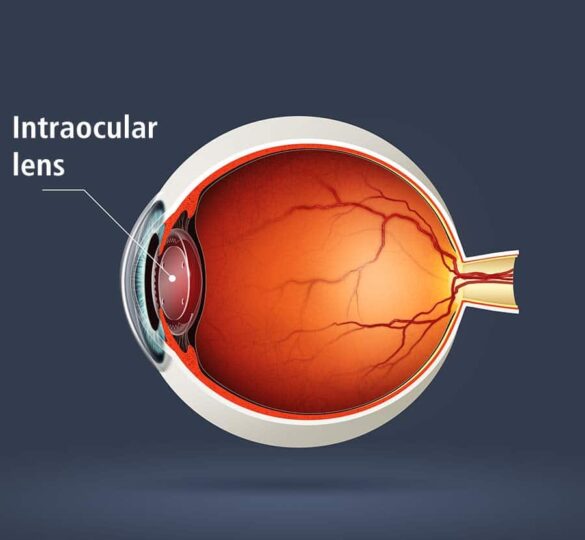Premium Intraocular Lenses (IOLs) for Patients with Glaucoma

During cataract surgery, the cataract is removed and a new lens is placed into the eye. These lenses are termed intraocular lenses, or IOLs. For patients undergoing cataract surgery, there are many new options in IOLs.
A cataract is a clouding of the lens in the eye. The lens is responsible for focusing light onto the retina. When it is cloudy, it is no longer able to perform this function. During cataract surgery, the cataract is removed and a new lens is placed into the eye. These lenses are termed intraocular lenses, or IOLs. For patients undergoing cataract surgery, there are many new options in IOLs.
In glaucoma, the changes to vision include loss of visual field and decrease in contrast sensitivity. Contrast sensitivity is the ability to detect differences between shades of light and dark and discern sharp edges. These factors must be taken into account when choosing an IOL.
Premium IOLs: Advantages and Disadvantages
Newer IOLs, also called Premium IOLs, fall into a number of categories.
Some Premium IOLs are made such that the lens has a special curvature to it, similar to newer telescopes. These lenses reduce some of the distortions produced by older, spherical lenses. These lenses are referred to as aspheric IOLs. As these lenses may improve contrast sensitivity, they have a great potential in patients with glaucoma.
Toric IOLs, lenses that have astigmatism control built-in, may reduce the need for glasses after surgery in patients with astigmatism, and are an excellent choice for glaucoma patients who have astigmatism. Patients with either of the above lenses will likely have good distance vision after surgery; however, they will require glasses to see up close for reading.
Multifocal IOLs provide multiple distances at which the patient can see clearly: distance, intermediate, and near. These lenses may eliminate the need for glasses for vision correction; however, they can reduce contrast sensitivity which is already an issue for many glaucoma patients. Some patients with multifocal IOLs report problems with glare and the appearance of haloes around oncoming headlights while driving. Multifocal IOLs can be used in patients with glaucoma, but the patient should be aware of the potential advantages and disadvantages of these lenses.
It should be noted that Premium IOLs do cost more and may not be covered by insurance.
With the advent of Premium IOLs, patients undergoing cataract surgery have new options for improved vision and have the potential to improve quality of life.
Article by Iqbal Ike K. Ahmed, MD, FRCSC and Joshua C. Teichman, MD.
Last reviewed on April 7, 2022.

Iqbal Ike K. Ahmed, MD, FRCSC
Iqbal Ike K. Ahmed, MD, FRCSC is Assistant Professor and Director of the Glaucoma and Advanced Anterior Surgical Fellowship, University of Toronto, Canada, and
Chief Medical Editor of Glaucoma Today.